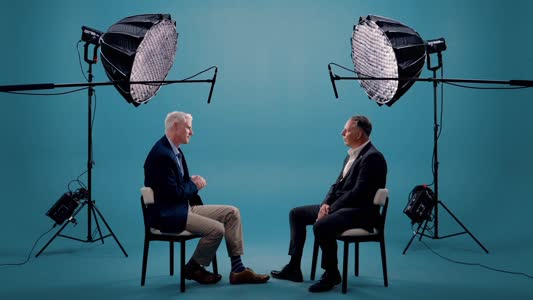

|
Edward Lowton
Editor |


|
| Home> | Plant, Process & Control | >Automation | >Robots that can "see" are the future of smart manufacturing |
Robots that can "see" are the future of smart manufacturing
28 March 2024
Fully integrated robot vision systems are on the rise, but what does it takes to create a good one, asks Benedict Yelf

COMBINED ROBOTICS and vision systems are pushing the boundaries of industrial automation applications and enhancing their capabilities. These advancements are enabling end users to considerably improve their operations when it comes to speed, performance and accuracy. Creating value-adding automated machines that leverage both robotics and vision systems, however, requires expert skills.
The case for fully integrated robot vision systems
While robots can truly complement automated machines and lines, even their most advanced models have limited spatial awareness and lack a level of cognition about their surroundings.
This limits their potential, specifically in areas where precision is required or the environment changes around them. Applications such as pick and place within the pharmaceutical industry or processes with a tight tolerance, such as drilling within the aerospace industry, would be conventionally difficult and would greatly benefit from robot vision. Thanks to the latest developments in this field, it is possible to overcome these challenges and create extremely powerful and versatile solutions. These not only improve conventional solutions involving robotics, but also expand the potential uses, supporting more processes with highly flexible setups.
Multi-component systems involve multi-faceted considerations
This expansion of possible robotics applications requires high levels of automation expertise to design, develop and implement valuable solutions.
A key aspect when looking to adopt vision-enabled robotic systems is defining the most suitable components. In addition to typical considerations on budget, payload, processing rate, space available and type of gripper, other parameters need to be factored in. These include illumination and ambient light (environmental lighting), image processing speed, properties of the objects that are to be assessed by the vision system as well as the compatibility of the different machine components.
In practice, it is important to look for a vision system that can reliably identify the items that the robot needs to interact with while considering its impact on the overall investment. For example, when handling elements that vary greatly in terms of colour and/or shape, solutions can range in complexity. These may involve changing the angle of the lighting or using advanced lighting options, such as a multi-coloured ring light, to enhance the optical spectrum that the system can detect.
This can provide more accurate colour description, resolution, contrast as well as reduce any noise in the image. Even more, such a system can incorporate LEDs for UV and IR lights, expanding detection capabilities beyond the visible spectrum. In effect, users can benefit from a vision tool that has access to more than the 1000x the number of colours available from a standard camera can detect whilst offering 3x the level of physical resolution. Of course, the benefits of more detailed imaging solutions need to be balanced with the feasibility of processing power required.
Other important aspects include the identification of the ideal height and the calibration of the cameras. If the field of view is not scaled to the environment correctly, the robot may not be able to locate or position the right item, which would lead to poor quality results, reworks and, ultimately, higher costs.
Moreover, ensuring proper lighting and background at any time while the system is in operation is fundamental. This can be more challenging than expected if the machine is exposed, even partially, to ambient light, which can change throughout the day.
The role of automation experts
By partnering with specialists who have a proven track record of successful implementations that combine robotic and vision systems, such as Optimal Industrial Automation, companies can benefit from high-quality solutions that address their needs. As a result, end users can maximise the gains they can achieve from innovative automated systems and enhance their competitiveness in a demanding marketplace.
Benedict Yelf is machine vision and automation engineer at Optimal Industrial Automation
For more information:
Tel: 01454 333222
- Latest software
- Compact robot controller
- Standard machine elements from Elesa
- test baner
- Baking automation
- Higher payload
- Power supplies controlled via web
- New Eiger freezer door installed as business heats up at leading meat packaging company
- Linear and rotary combination
- High temperature chain fluid



















